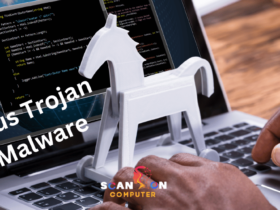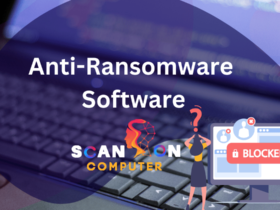Have you wondered how organizations catch stealthy hackers who evade traditional defenses? Cyber threat hunting is the proactive practice of seeking out lurking threats inside networks before they cause harm. As attackers grow more sophisticated, relying solely on automated detection is not enough. Cyber threat hunters combine intuition, data analysis, and intelligence to find hidden attacks early.
This comprehensive guide covers what cyber threat hunting is, how it works, key methodologies, best practices, and actionable tips. Whether you are a cybersecurity specialist, organizational leader, or forum reader diving into advanced security, understanding cyber threat hunting is essential.
What is Cyber Threat Hunting?
Cyber threat hunting is a proactive cybersecurity process where experts actively search for signs of malicious activity within a network or system that automated tools have missed. Unlike reactive security measures, hunting assumes attackers may already be inside wired or wireless infrastructure, and aims to identify their footprints early.
Attackers often maintain stealth within networks for months stealing data or probing defenses. Threat hunters dig deep using threat intelligence, behavior analytics, and manual investigation to uncover these hidden threats.
Why Cyber Threat Hunting Matters?
-
Prevents prolonged breaches: Detects attackers before significant damage or data loss.
-
Complement automated defenses: Finds threats evading firewalls, antivirus, and SIEM alerts.
-
Enhances incident response: Early visibility accelerates mitigation and recovery.
-
Improves security posture: Reveals gaps and refines security policies.
With cybersecurity attacks escalating worldwide, organizations who actively hunt threats maintain an edge in defending complex, hybrid digital environments.
Key Cyber Threat Hunting Techniques
1. Hypothesis-Driven Hunting
Threat hunters start with a hypothesis derived from recent threat intelligence or observed attacker tactics. For example, if a new ransomware strain is spreading globally, the hunter seeks signs of related behavior in their network.
2. Intelligence-Based Hunting
Using Indicators of Compromise (IOCs) such as IP addresses, domain names, or file hashes, hunters scan logs and endpoints to uncover lateral movement or footholds.
3. Analytics-Driven Hunting
Advanced machine learning and UEBA tools detect anomalies contrasting baseline “normal” activity, highlighting suspicious patterns for human analysis.
4. Situational Awareness-Driven Hunting
A thorough understanding of the organization’s crown jewels and environment informs focused hunting to protect critical assets.
5. Reactive Hunting
Triggered by alerts or recent breaches, this hunting investigates suspicious activities retrospectively to contain threats fast.
The Cyber Threat Hunting Process
-
Formulate a hypothesis: Define a potential threat based on external intelligence, anomalous behaviors, or risk scenarios.
-
Data collection: Aggregate logs, network telemetry, endpoint monitoring data, and threat feeds.
-
Data analysis: Use queries, machine learning, and manual techniques to identify suspicious indicators.
-
Investigations: Correlate events, trace attacker movements, and reconstruct the attack chain.
-
Response: Contain or remediate threats promptly and feed findings back into defense strategies.
Essential Tools for Effective Hunting
-
Security Information and Event Management (SIEM) systems
-
Endpoint Detection and Response (EDR) platforms
-
Threat intelligence platforms for IOC feeds
-
Network traffic analyzers and packet capture tools
-
User and Entity Behavior Analytics (UEBA) solutions
Combining human expertise with these tools accelerates detection and minimizes false positives.
Cyber Threat Hunting Best Practices
-
Continuously update hunting hypotheses according to evolving threat landscapes.
-
Baseline normal behavior to improve anomaly detection effectiveness.
-
Prioritize critical assets and high-risk attack paths.
-
Collaborate closely between threat hunters, analysts, and incident responders.
-
Automate repetitive tasks but retain human oversight for contextual insights.
Challenges in Cyber Threat Hunting
-
Huge volume and complexity of data
-
Skilled hunter shortage
-
Balancing automated detection vs. manual analysis
-
Staying ahead of rapidly evolving attacker tactics
Organizations invest in training, advanced tools, and threat intelligence sharing to overcome these hurdles.
The Future of Cyber Threat Hunting
Emerging trends blending AI, automation, and collaborative frameworks promise to enhance threat hunting capabilities:
-
Next-generation ML that self-adjusts baselines
-
Integrated XDR platforms unifying endpoint, network, and cloud telemetry
-
Automated hypothesis generation from global threat intelligence
-
Community-driven threat hunting shared research
These advances will help security teams discover stealthy threats faster and more reliably.
Frequently Asked Questions (FAQ)
Q1: What exactly is cyber threat hunting?
Cyber threat hunting is the proactive search for insider threats and hidden attackers inside an organization’s IT environment using analysis, intelligence, and human expertise.
Q2: How does threat hunting differ from threat detection?
Detection relies on automated alerting by tools, while hunting involves actively looking for stealthy threats that haven’t triggered alerts yet.
Q3: What skills should a cyber threat hunter have?
Strong analytical ability, understanding of attacker techniques, expertise with security tools, and knowledge of the organization’s network environment.
Q4: What are common hunting methodologies?
Hypothesis-driven, intelligence-based, analytics-driven, situational awareness-driven, and reactive hunting are common approaches.
Q5: Do organizations need a dedicated threat hunting team?
Large organizations typically have specialized teams, but smaller businesses can integrate hunting functions into their security operations or use managed services.
Q6: How do AI and ML assist in threat hunting?
They help analyze vast datasets looking for anomalies and help prioritize suspicious events for human review.
Q7: Can threat hunting prevent data breaches?
It helps detect and stop breaches early, minimizing damage and data loss but is most effective when part of a layered security approach.
Q8: What is the role of threat intelligence in hunting?
Threat intelligence provides updated data on attacker tactics and indicators of compromise to guide hunting activities.
Final Thoughts and Call to Action
Cyber threat hunting empowers organizations to go beyond reactive defenses, finding threats before major damage occurs. By combining skilled analysts, powerful tools, and rich intelligence, organizations build a proactive posture against today’s sophisticated attackers.
Start enhancing your security by adopting structured threat hunting methodologies today. Explore training, invest in the right tooling, and embed hunting as a continuous security practice. Need guidance tailored to your organization’s size and industry? Reach out to expert cybersecurity consultants who can help build a threat hunting program that truly defends your enterprise.
Protect your digital assets with proactive cyber threat hunting — the difference between responding to incidents or preventing them.













Leave a Reply
View Comments